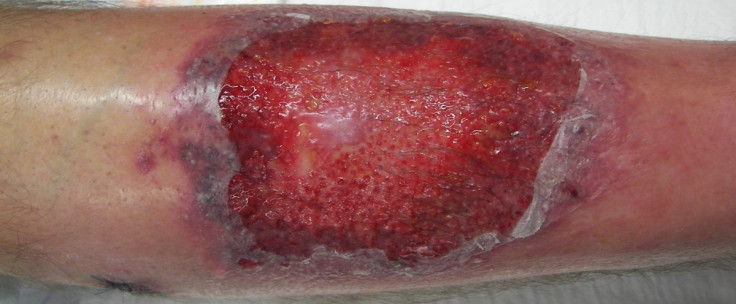Mysterious skin disease plaguing England, Belgium and France finally linked to genetic mutation

A mysterious, decades-old disease affecting families in England, Belgium, and France has finally been identified. An international team of researchers has discovered a genetic mutation directly associated with the condition, as well as potential for curing it.
Their conclusions, published in the journal Science Translational Medicine, describes this very rare illness as an inflammatory disease, which causes severe skin lesions, fevers, pain and exhaustion. In the affected families, it was passed on from generation to generation, with about half of the children developing the same symptoms as their parent. However, doctors were unable to find the origins of the problem, let alone to come up with a treatment.
Now, combined efforts from the University of Leuven in Belgium, the VIB institute of life sciences, and the Walter and Eliza Hall Institute in Australia led to the discovery that the disease was driven by a single genetic mutation. "Detailed work by clinicians told us that we were dealing with a genetic disease. Thanks to advances in DNA sequencing technology, we were able to sequence the genome of these patients and find the mutation causing the disease," explains Adrian Liston, lead scientific researcher.
They have now given the disease a name: Pyrin Associated Autoinflammation with Neutrophilic Dermatosis, or PAAND.

Alternative mutation
The gene responsible for the disease is not completely mysterious to scientists. Known under the name MEFV, it had already been identified in the past as the cause of another inflammatory disease, the Familial Mediterranean Fever (FMF). However, the mutation corresponding to this disease is not the same as the one causing PAAND.
In the case of PAAND, only one copy of the mutation, from one parent, is needed for the child to be sick, which explains why about 50% of them exhibit signs of the disease. In contrast, the person needs to inherit two copies of the mutation, from both parents, to get FMF, which is why the disease often skips generations.
Finding a treatment
Thanks to this discovery, scientists now understand better what causes the skin lesions: it is directly linked to the way the mutation impacts the body.
"The PAAND mutation causes the body to respond as if there is a bacterial skin infection. This leads to the skin making the inflammatory protein interleukin-1β, which causes skin lesions, fevers and pain", says co-author Seth Masters, from the Walter and Eliza Hall Institute.
This knowledge of the biological mechanisms has enabled researchers to come up with treatment options. They have worked on a cure, based on a common anti-arthritis drug, anakinra, which targets the interleukin-1β protein.
The first patient who tested the treatment, a volunteer from England, saw an important improvement in his condition, with skin lesions and fever disappearing – paving the way for a larger clinical trial.
"This is the synthesis of an intense collaboration between clinicians and scientists trying to understand this disease for almost 10 years. I am delighted to see how it has increased our understanding of rare mutations, and especially has opened a therapeutic perspective for these patients", Carine Wouters, the last co-author, concluded.
The researchers invite anyone with questions regarding the disease to contact them on their dedicated email address: patients@vib.be
© Copyright IBTimes 2025. All rights reserved.






















